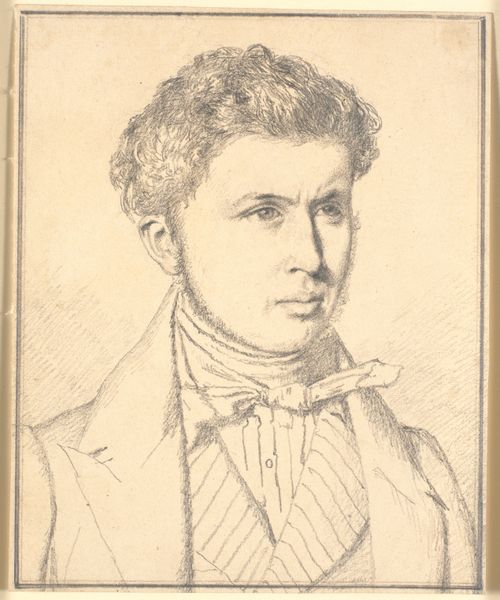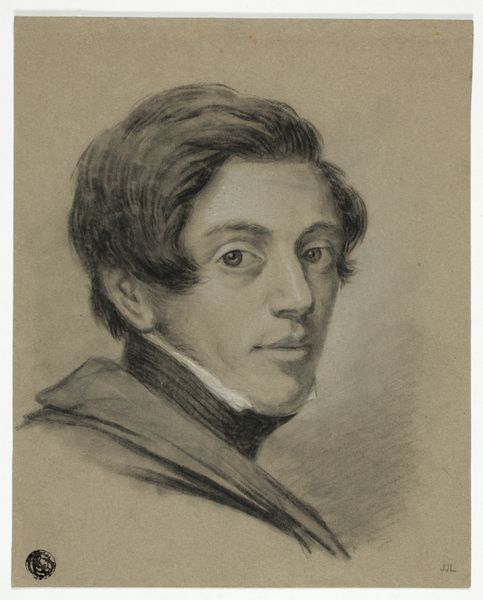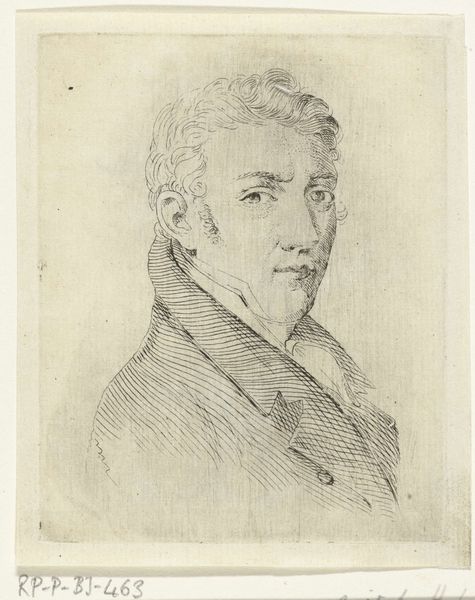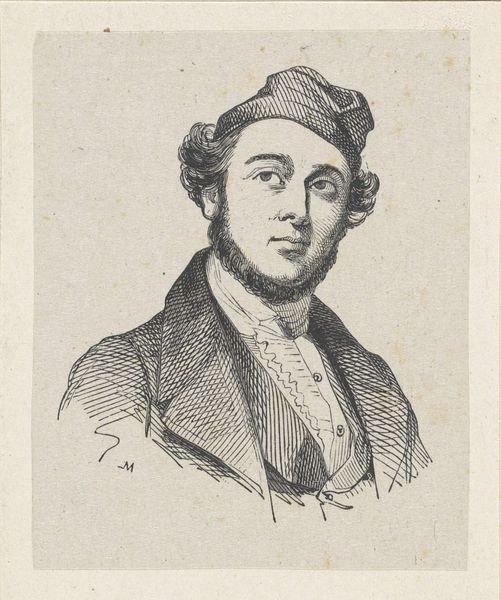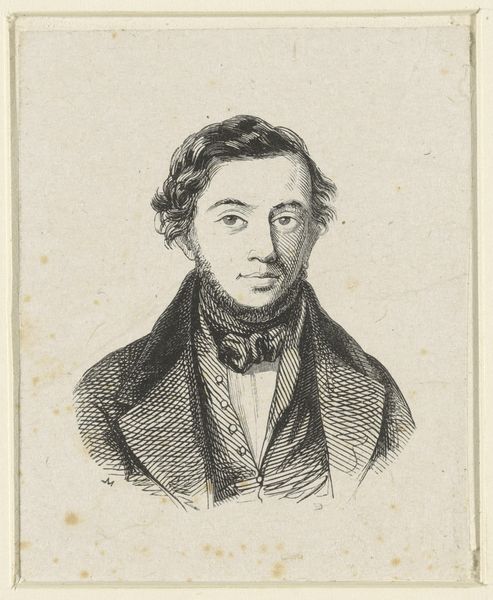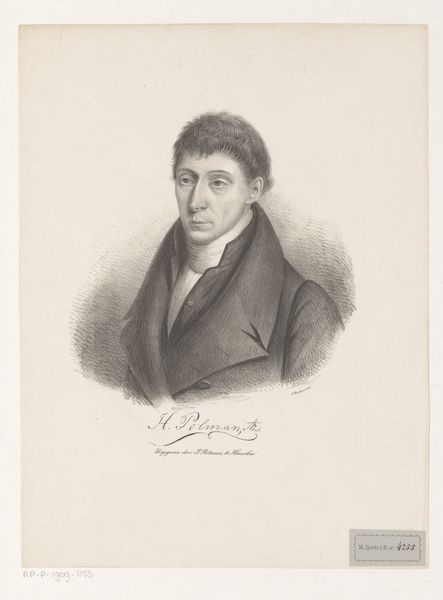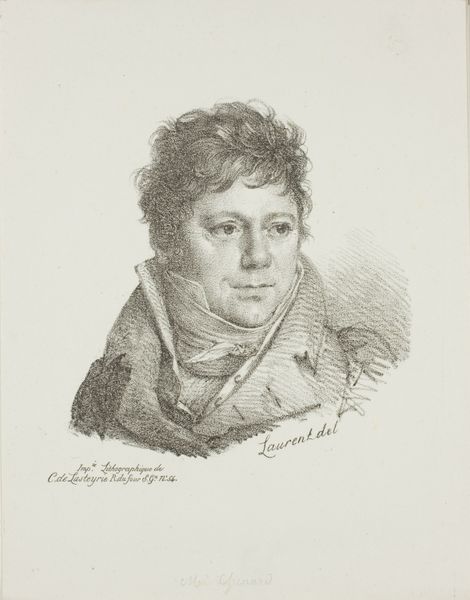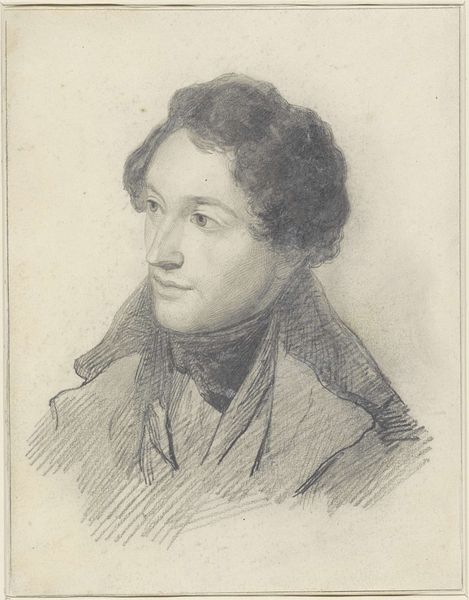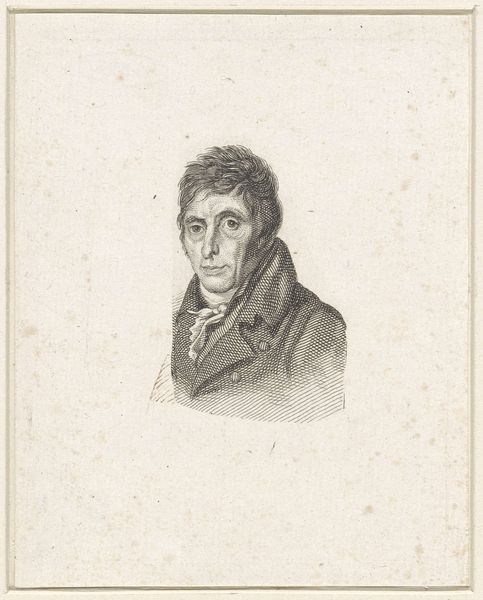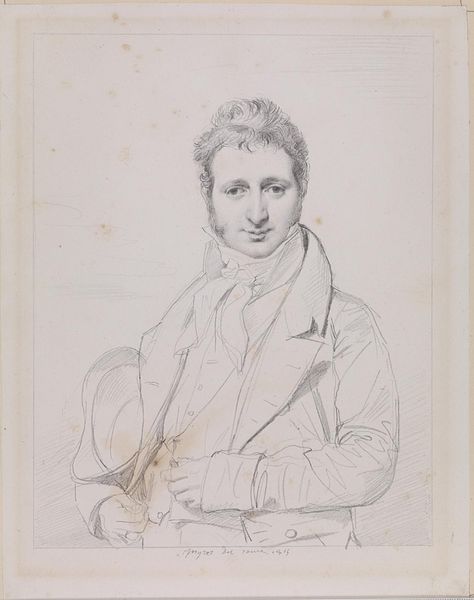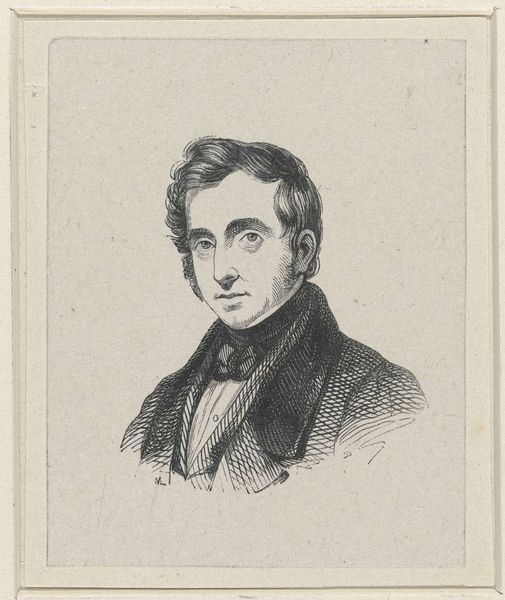
drawing, pencil
#
portrait
#
pencil drawn
#
drawing
#
figuration
#
pencil drawing
#
romanticism
#
pencil
#
portrait drawing
Dimensions: 135 mm (height) x 125 mm (width) (bladmaal)
Editor: Here we have Wilhelm Marstrand’s 1836 pencil drawing, "Portræt af C. Købke." There’s a delicate, almost fragile quality to it, a sensitivity that the medium really emphasizes. What can you tell me about it? Curator: I see a fascinating exploration of labor and representation. Consider the act of drawing itself. Pencil on paper: these are readily available materials, yet Marstrand transforms them through skillful labor. The Romanticism tag is a clue: Romanticism saw a burgeoning art market and questions arose about the artist's place in this production system. Editor: So, the *act* of making the art becomes important, beyond just the image itself? Curator: Precisely. Notice the clear visibility of the pencil strokes, there's no attempt to conceal the hand of the artist. It almost challenges the idea of the artist as some untouchable genius and celebrates skillful handwork. Who was Købke, and how does Marstrand's approach either challenge or support that artist's status? Editor: He was a contemporary landscape painter! So it’s like Marstrand is showing, "Look, I’m doing the work too," levelling the field a bit. It’s not just about capturing a likeness. Curator: Yes! And perhaps even questioning the increasing commercialization of art, by highlighting the fundamental process. Where do you think this places art in a culture beginning to churn out commodities at faster rates than ever? Editor: Wow, I hadn't thought about it that way. I was just seeing a simple drawing, but now I see this commentary on art production baked right into the materials themselves. Curator: It's about seeing art as labor, as material, and engaging in conversations with the art world itself! This reframes how we consider the value we attribute to artworks.
Comments
No comments
Be the first to comment and join the conversation on the ultimate creative platform.
